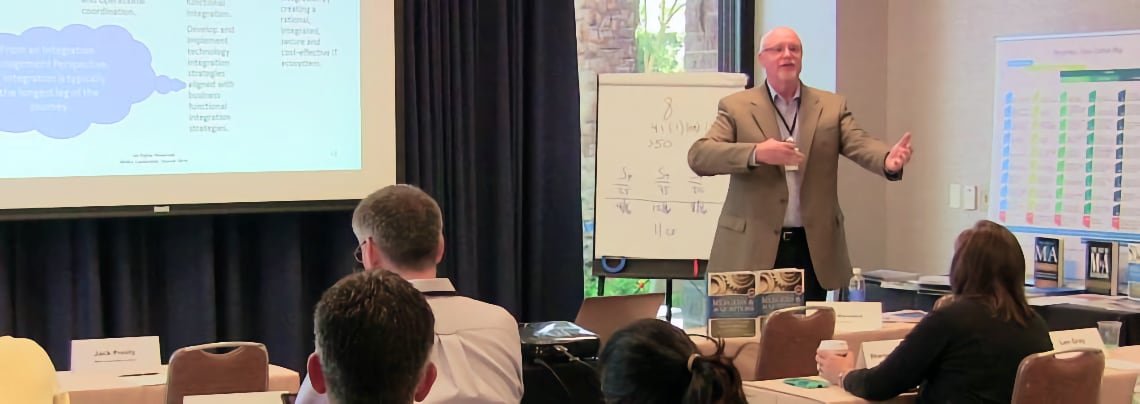The challenge with any survey summary or set of general principles for success is moving from awareness and "aha" moments to application and action. Today, I’d like to shine the spotlight on specific, actionable strategies that every acquirer should do to minimize value erosion during M&A integration.
“Unfortunately for most companies, as statistics bear out, the vast majority of mergers just don’t go as planned. In fact, most mergers are driven by growth, but at the expense of shareholder value.”
Jim Jeffries, Chairman M&A Leadership Council
THE ART OF M&A LEADERSHIP (First of 2 parts)
Collaboration on Day One is Mission-Critical
Presented by Binary Tree
Solutions for Day One Collaboration
- Solutions include Directory Synchronization and Email Coexistence
Solutions for Post-Merger IT Integration
- Solutions include Directory Migration and Email Migration
Read the complete article for details:
M&A Leadership Council Announces the Upcoming Publication of
“The Employee Handbook for Navigating Mergers and Acquisitions:
A Guide for Preparation, Patience and Perseverance”
Mitchell Lee Marks, Ph.D.
San Francisco State University
Serving the M&A Community - Seeking M&A Integration Consultants
The M&A Leadership Council is routinely asked to refer experienced independent or boutique consultants and project contractors for a variety of general M&A, due diligence and integration assignments. Typical assignments are with Fortune 500 or upper mid-market acquirers with active or pending opportunities. Currently, the following prospective, project-based opportunities are being sourced.
Hillshire announced that it intends to buy Pinnacle Foods for US$ 6.6bn. On the heels of this, Mergermarket ran some quick stats and discovered how well the consumer market is doing.
Check it out:
In my previous blog, I identified three common mindsets employees bring with them as they join a new work team after being merged or acquired: “The Ready.” Employees who get the job they wanted or expected in the combined company are usually ready to enlist in the new team. With worries about their personal fate substantially behind them, they are charged up by the challenges and opportunities of adding real value. For example, after being acquired
Have You Listened to Our Webcast? Download it Here, Along with Expanded Notes
One of the questions raised at last week’s Art of M&A Integration workshop had to do with “the challenge of finding adequate resources to staff the integration effort” Actually, this is probably the most often asked question. In dealing with this challenge, we need to remember……The requirements for successful merger integration are often counterintuitive to most business practices and tenets.
